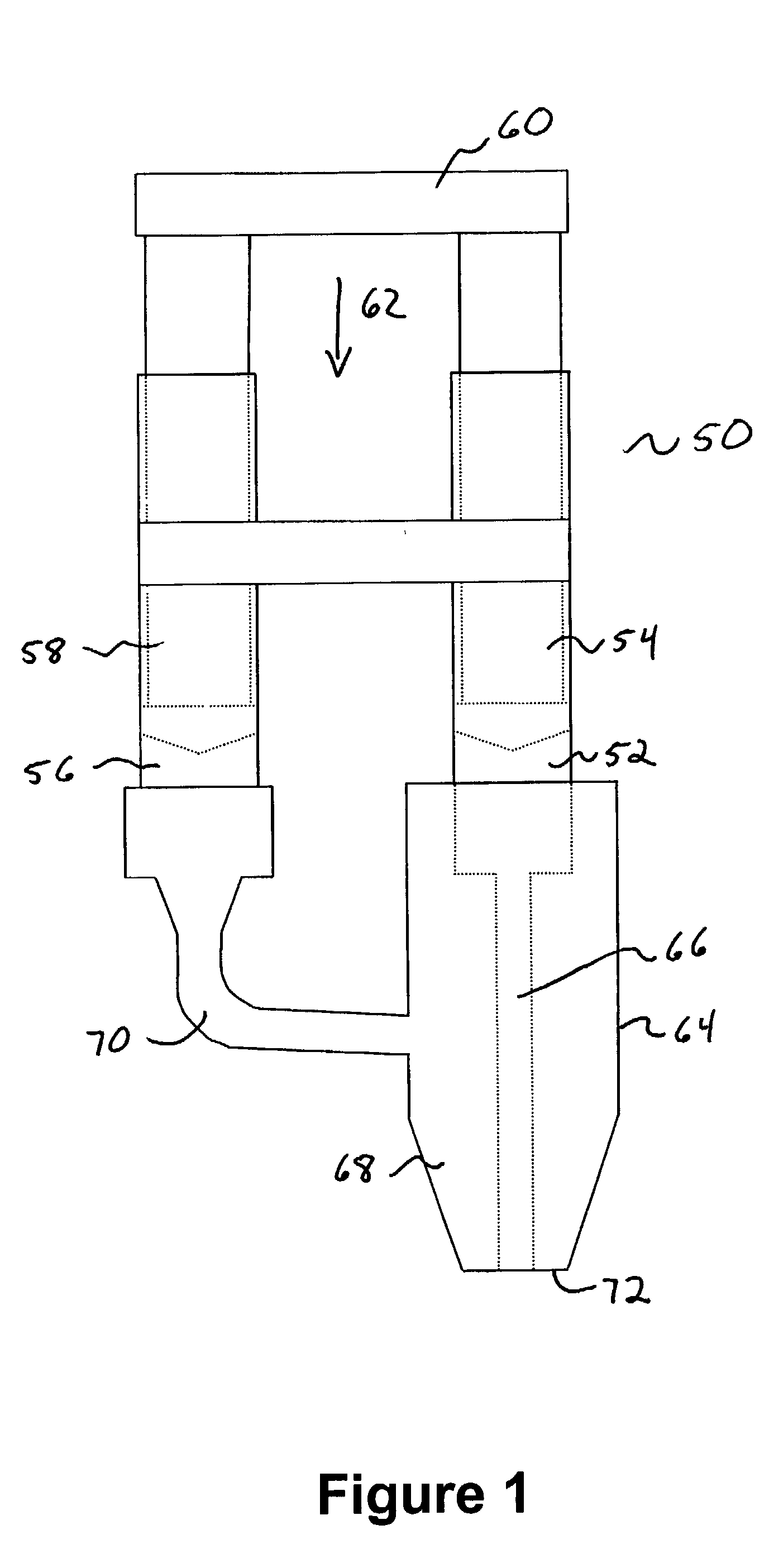Injectable system for controlled drug delivery
a technology of injectable system and controlled drug, which is applied in the direction of powder delivery, medical science, medical preparations, etc., can solve the problems of exceeding the desired dosage level, difficult and expensive encapsulation of bioactive agent in microsphere, and danger of degradation of bioactive agent, etc., to achieve a higher ratio of hydrophobic polymer, the effect of accelerating the mixing of solvent and water
- Summary
- Abstract
- Description
- Claims
- Application Information
AI Technical Summary
Benefits of technology
Problems solved by technology
Method used
Image
Examples
example 1
[0065] A polymer mixture was prepared by mixing PDLA with N-methyl pyrrolidone (NMP) at a 20 wt % loading of the polymer. Mixing was carried out in a 10 cm.sup.3 glass vial at room temperature for several hours to ensure complete dissolving of the polymer and removal of all air bubbles. Due to the hygroscopic nature of the solvent, solutions were used within 24 hours of preparation. Composition of the mixture is given in Table 1.
examples 2-4
[0066] Polymer mixtures were prepared as in Example 1, except using mixtures of PDLA and PLURONIC L101 at weight ratios of 4:1, 2.3:1 and 1.5:1. The total polymer loading in each mixture was maintained at 20 wt %. The compositions of the mixtures are given in Table 1.
example 5
[0067] A polymer mixture was prepared as in Examples 2-4, except using a mixture of PDLA and PLURONIC L121 at a weight ratio of 2.3:1. The total polymer loading in the mixture was maintained at 20 wt %. The composition of the mixture is given in Table 1.
1 TABLE 1 Composition in weight percent Example PDLA L101 L121 NMP 1 20 -- -- 80 2 16 4 --80 3 14 6 -- 80 4 12 8 -- 80 5 14 -- 6 80
PUM
 Login to View More
Login to View More Abstract
Description
Claims
Application Information
 Login to View More
Login to View More - R&D
- Intellectual Property
- Life Sciences
- Materials
- Tech Scout
- Unparalleled Data Quality
- Higher Quality Content
- 60% Fewer Hallucinations
Browse by: Latest US Patents, China's latest patents, Technical Efficacy Thesaurus, Application Domain, Technology Topic, Popular Technical Reports.
© 2025 PatSnap. All rights reserved.Legal|Privacy policy|Modern Slavery Act Transparency Statement|Sitemap|About US| Contact US: help@patsnap.com



